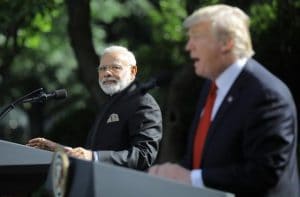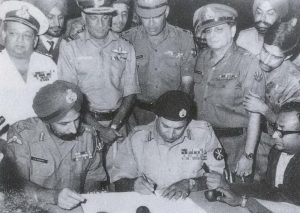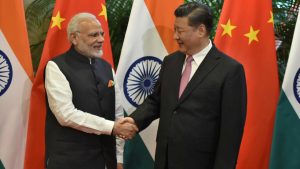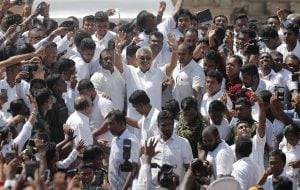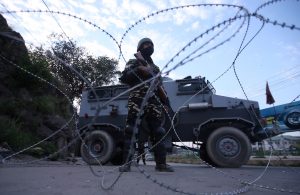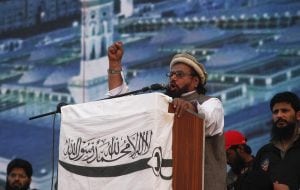Hyderabad: The road from the encounter killings heads to infinite darkness, not justice

KV Prasad Jun 13, 2022, 06:35 AM IST (Published)
 Listen to the Article (6 Minutes)
Listen to the Article (6 Minutes)
Summary
For decades, extra-judicial executions have formed the bedrock of Indian criminal justice, a response to public frustration over the state’s inability to enforce order.
Late in the winter of 1979, as police officers watched, a doctor inserted a needle into Patel Sah’s eyes — to be clear, the kind used to stitch jute bags, not a surgeon’s tool. Then, they carefully dropped acid into the wound, to be sure. No-one paid much attention: Sah was just one of 33 local men, alleged to have participated in violent crime, who was punished by blinding. Local judges ignored the parade of blinded prisoners; jail authorities pretended nothing was wrong. For the most part, the public cheered: Lacking witnesses, prosecution after prosecution collapsed.
“It is far pleasanter to sit comfortably in the shade rubbing red pepper in some poor devil’s eyes,” the British civil servant James Stephens observed in 1883 of India’s colonial-era police, “than to go about in the sun hunting up evidence”. It’s even easier to torture them.
This morning, millions of Indians have been applauding the killing of four men alleged to have raped, and murdered, a Hyderabad woman — shot, the police claims in a story that does barely aspires to narrative credibility, while attempting to escape. Leaders have joined in: the Congress’ Jyotiraditya Scindia, the Bharatiya Janata Party’s Rajyavardhan Rathore, and the Bahujan Samaj Party’s Kumari Mayawati, have all been cheering the same team, a sight rarely seen other than at international cricket matches.
Extra-judicial executions and torture aren’t new in India: but this is the first time they’ve been publicly applauded. The morning of Friday, December 6, 2019, might well mark the time India decided to stop wasting time and money pretending to be a Republic, and transformed itself from the world’s largest democracy into the world’s greatest Khap Panchayat.
Public frustration over the state’s inability to enforce order
Let’s accept this: moral pieties aren’t the answer to what’s happened in Hyderabad. For decades, extra-judicial executions have formed the bedrock of Indian criminal justice, a response to public frustration over the state’s inability to enforce order. From the mid-1960s, police forces in Madhya Pradesh and Uttar Pradesh began shooting dacoits in response to massacres and looting — hideous crimes that had none of the nostalgic romance now vested in them by Hindi pop film. Five hundred dacoits were reputed to have been killed in the operations; contemporary newspaper accounts were suffused with stories of extra-judicial killings and torture.
In Maharashtra, then-police commissioner Julio Ribeiro has often been alleged to have presided over the murder of organised crime suspects. Beginning with the cold-blooded murder of Manya Surve in 1983, an estimated 500 men with alleged links to crime syndicates and terrorism were simply shot dead.
“The encounter policy was not only not questioned at the time,” journalist Debashish Panigrahi wrote, “it was warmly welcomed as a necessary step in breaking the back of the underworld.”
Siddharth Shankar Ray, West Bengal’s former chief minister, is reputed to have presided over the torture and killing of hundreds of Maoists, aided by the state’s communists. There are graphic accounts of how “over a hundred young Naxalites were killed by the Congress and the CPM together at Baranagar and Kashipur, close to Kolkata, and the dead bodies were tarred over and thrown into the Ganga”.
The Indian elephant is slow generally pacific — but, when panicked, it is a savage, indiscriminate killer. It’s generally forgotten that Prime Minister Indira Gandhi ordered the air force to bomb Aizawl in March, 1966, using air power against civilians.
Assam Chief Secretary Vijendra Singh Jafa recorded how the villagers of Darzo were relocated: the hamlet was set on fire, and elders ordered to certify “that they had burnt down their own village.”
For obvious reasons, there’s no certain way of telling just how common extra-judicial killings by police are. There is no national database of the mandatory inquiry by magistrates into all cases of use of lethal force by police. Few cases, moreover, are investigated; just six cases relating to extra-judicial executions were registered in 2017. This, however, we do know: Having fallen for several years from 2010, civilian deaths in police action have surged from just 40 in 2014, to 772 in 2017.
In 2017, Haryana registered an astonishing 431 killings of civilians by police in what are described as “other incidents”— a term the NCRB uses to distinguish these deaths from those from a clear cause, like “accidentally” during police operations, or shootouts with terrorists and armed criminals. This single category from Haryana made up over 55 percent of all killings by police in 2017; Uttar Pradesh, with 88, came in a close second.
The numbers are significantly higher than in 2016, when the NCRB reported 91 civilian deaths in 183 incidents where police used lethal force. In population-adjusted terms, this rate of killing is still relatively low: police forces in the United States and Mexico, among others, reach more easily for their guns. The fact is, however, that this involves cold-blooded murder: The act, we’d like to think, of criminals, not nation-states
No institutional introspection
Like everything else, this savagery has a context. KTS Tulsi, the eminent lawyer, who served as public prosecutor in Punjab’s most grim years of carnage, has provided rare insight why these things happened the way they did. In February, 1986, Dalip Singh’s son, Avtar Singh, was shot dead by a group of four terrorists outside the village church. In June 1988, top terrorist Malkiat Singh Ajnala was arrested — and charged, based on his video-taped confession, with the murder.
“I, in my capacity as Public Prosecutor, met Dalip Singh,” Tulsi wrote, “who very bluntly told me, with tears in his eyes, that he would not give evidence in court because he had been told that if he did so, his two other sons would meet the same fate.” “Dalip Singh refused to identify his own son’s murderer”.
Malkit Singh Ajnala vanished in the waning years of the insurgency — perhaps ending up as one of the many victims of Punjab Police encounters the police never did get around to identifying.
From the frontlines of India’s insurgencies, stories like these emerge all the time. Farooq Ahmad Dar, known on the streets of Srinagar as Bitta Karate, who lives a quiet life in Srinagar after bragging that he executed Kashmiri Pandits, lives happily; hundreds of people showed up at his wedding in 2011. Maulana Masood Azhar, the chief of the Jaish-e-Muhammad spent years in Indian jails without being convicted of anything.
Following Azhar’s release in the Indian Airlines hostages-for-prisoners swap at Kandahar, and the surge of pan-India terrorism starting from 2002, security services operated a take-no-Pakistani-prisoners policy — a policy that, infamously, was to take the life of alleged Lashkar-e-Taiba recruit Ishrat Jehan Raza.
There’s no evidence, though, that the Gujarat police was especially fond of these policies. In 2004, the year Ishrat Jahan was killed, there were 354 civilian civilians killed in police firing — the highest number coming from Andhra Pradesh, with 85, Jammu Kashmir with 50, Uttar Pradesh with 42. Gujarat had just 5.
From time to time, courts have stepped in to contain police killings — but there’s been no institutional introspection, let alone reform. In a 1996 editorial, written amidst prosecutions of decorated Punjab Police officers, Indian Express editor Shekhar Gupta asked this: “the Punjab crisis saw five prime ministers and as many internal security ministers. Each one knew precisely what was going on”. “Why are they hiding now?”
The answer is simple: the encounter-killing remains a valuable tool for Indian governments; a quick-fix for their inability to build a modern nation-state, governed by institutions and the rule of law. Police forces simply don’t have the numbers, resources, skills or technologies needed to bring about prosecutions — but the public demands order. The encounter-killing offers at the least the simulacrum of it.
For all the talk of making India safer, the data tells us what government promises have been worth. Bureau of Police Research and Development (BPR&D) statistics show, there are 192 officers sanctioned for every 100,000 of India’s 1.287 billion residents: Except there aren’t. Because police hiring has lagged, bogged down by budget constraints, India actually has 150.80 police officers per 100,000 population, below the sanctioned level even for 2007. Uttar Pradesh should have 185 police officers per 100,000 citizens; it has 127. Telengana should have 218; it has 131.
Manpower shortage
In 2017-2018, according to BPR&D statistics, India’s states and union territories together spent Rs 108,174.88 crore on police forces: up just 1.39 percent in nominal terms. In no states barring Tamil Nadu, Telengana and Delhi did spending on police constitute more than 2 percent of the budget.
That’s not even counting quality: The sight of officers of the Telengana Police, the country’s best-resourced and trained, rifling the crime-scene without gloves tells us all we ought need to know. In 2016-2017, the last year for which figures are available, just 44,083 police personnel across the country received any form of in-service training: 0.03 percent of the national police force.
No-one ought be surprised, either, that trials of alleged rapists haven’t become faster because of new fast-track courts, or that conviction rates haven’t inched up despite new laws: The criminal justice system has, simply, disintegrated. The consequences are also there for us to see. Police attitudes to investigation, to the rule of law, and life itself have been casualised: Why bother spending months digging for evidence, when you can settle the case with a bullet? Public respect for laws and courts has diminished; even the police are obeyed only because of fear.
For India, there will be a certain, inexorable consequence. From the traffic lights we refuse to stop at, to the parking disputes which end with gunfire, to mob violence over electricity or water: Each of these is a symptom of the same malaise we’re applauding in Hyderabad. Popular will isn’t, notwithstanding what we’re taught in school, the foundations of a Republic: It’s law. We’ve lost it.
Perhaps India deserves better, but its leadership has proved incapable of delivering it — and its people are demanding it. The road from here heads straight into infinite darkness.

Elon Musk forms several ‘X Holdings’ companies to fund potential Twitter buyout
3 Mins Read
Thursday’s filing dispelled some doubts, though Musk still has work to do. He and his advisers will spend the coming days vetting potential investors for the equity portion of his offer, according to people familiar with the matter

KV Prasad Journo follow politics, process in Parliament and US Congress. Former Congressional APSA-Fulbright Fellow



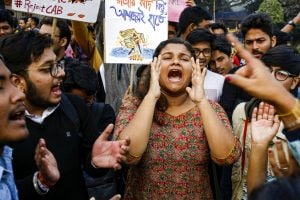






 Listen to the Article
Listen to the Article  Daily Newsletter
Daily Newsletter





